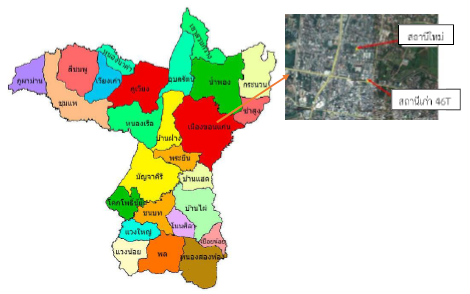Risk analysis of PM2.5 and PM10: A case study at Khon Kaen City
Keywords:
generalized extreme value distribution, generalized Pareto distribution, air pollutionAbstract
The objective of this research is to investigate correlations of variables that affect the dust particle size not more than 2.5 microns (PM2.5) and dust particles not more than 1.0 microns (PM10), to find suitable distribution and model, and to assess the risk of air pollution in Khon Kaen city. The results showed that variables affecting to PM2.5 are PM10, NO2, CO and O3 and variables that affecting to PM10 are PM2.5, NO2, and O3. Appropriate model and distribution for monthly PM2.5 data on the covariables when using the generalized extreme distribution are where = -7.01+0.31(PM10)+0.21(NO2)+9.16(CO)+0.22(O3), and which is Weibull distribution. Appropriate model and distribution for monthly PM10 on the covariables when using the generalized extreme distribution are where = -13.37+0.75(PM2.5)+0.27(NO2)+0.42(O3), and which is Gumbel distribution. Appropriate model and distribution for daily PM2.5 on the covariables when using the general Pareto distribution are where = 21.85+0.11(PM10)+0.31(NO2)-5.72(CO)-0.17(O3) and which is gamma distribution. Appropriate model and distribution for daily PM10 on the covariables when using the general Pareto distribution are where = 19.65+0.08(PM2.5)+0.08(NO2)+0.13(O3) and which is gamma distribution. In addition, the relevant organizations can apply the result of the return level to find measures to prevent and solve the problem of increasing air pollution.

Downloads
Published
Issue
Section
License
Copyright (c) 2021 The Journal of Applied Science

This work is licensed under a Creative Commons Attribution-NonCommercial-NoDerivatives 4.0 International License.

